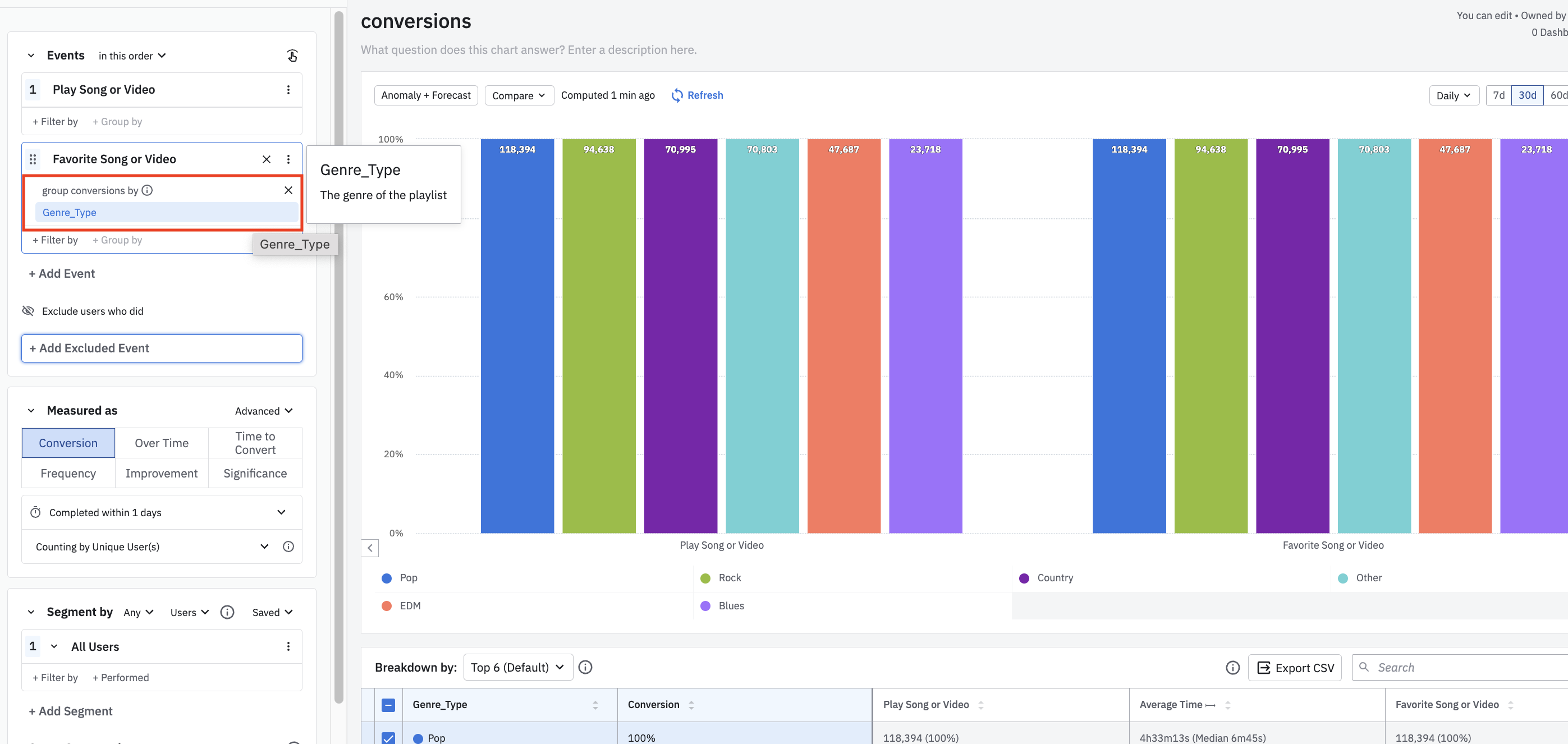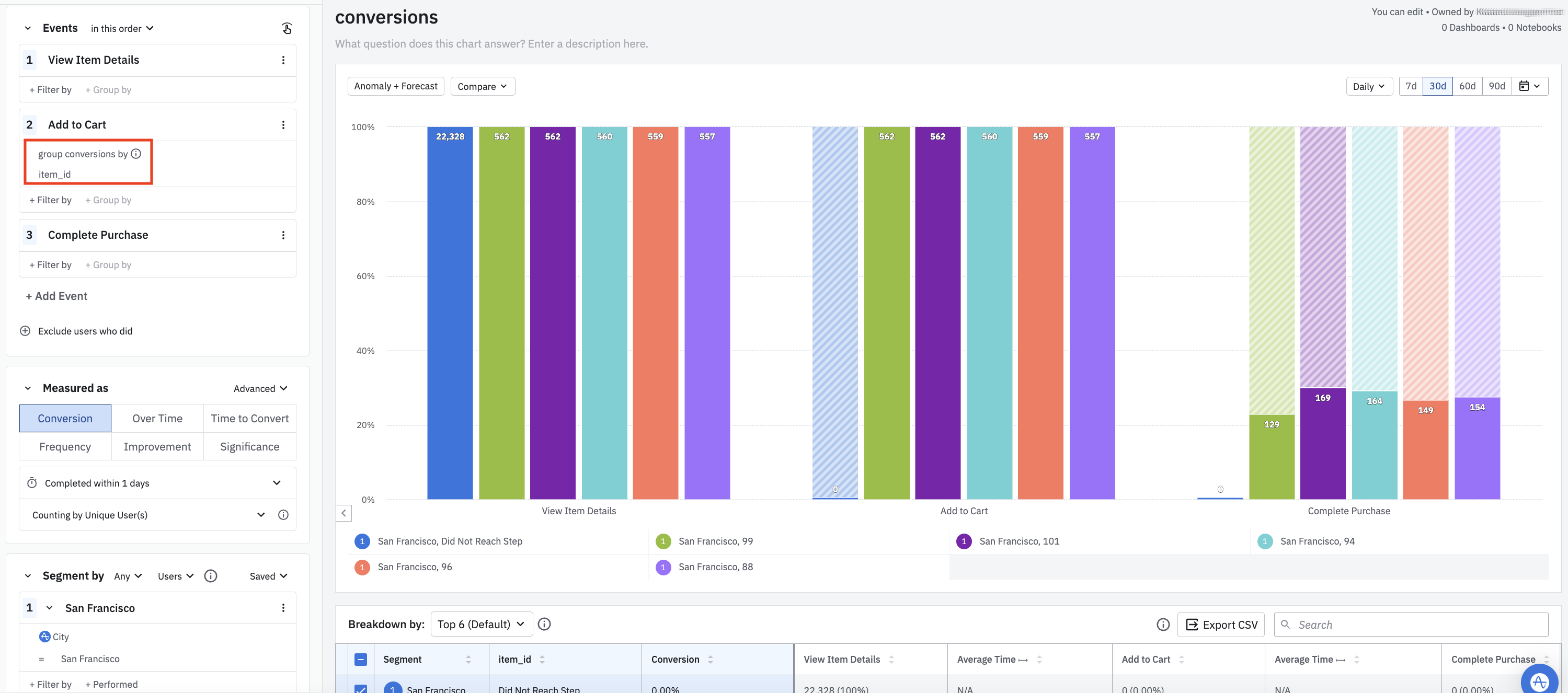How filters work in a Funnel Analysis chart
This article helps you:
Understand how Amplitude interprets different filters in a Funnel Analysis chart
There are certain nuances to applying filters in a funnel analysis:
Applying filters in the Segmentation Module
In a funnel chart, any filters applied via the Segmentation Module apply only to the first event. You can, however, add filters to individual steps directly in the Events module.
Note
Applying group-by filters
You can apply a group-by filter in the Segmentation Module, for up to two properties. The group-by filter will apply only to the first event, similar to the other filters in the Segmentation Module.
If you are looking at the Unique Users metric and users can complete the steps of your funnel multiple times, the group-by filter will take the first occurrence of the event and bucket the user for the value on that event.
Note
You can also use the group-by filter for an event (limit of one event group-by per funnel). The results will show how users with a certain event or user property converted through the other steps in the funnel. This helps you understand what property value potentially has the greatest or smallest impact on conversion.
For example, look at this Funnel Analysis chart:

The Group-by here looks at users' property values for Genre_Type at the time their Favorite Song or Video events are triggered, and shows how they converted through the remaining events of the funnel.
For example, a user that has a Pop property value for Genre_Type at the time their Favorite Song or Video event was triggered will show up under the Pop property bar for the Play Song or Video event as well.
Note
This three-step funnel is grouped by Step 2's event property, item_id:

The graph shows the conversion distribution of users who triggered Step 2 (Add Item to Cart) event, broken out by each item_id value.
If you choose to group by a step other than the first, you will also see a segment of users who did not reach that segmented step (the blue-shaded segment for 'did not reach step' in this example).
May 29th, 2024
Need help? Contact Support
Visit Amplitude.com
Have a look at the Amplitude Blog
Learn more at Amplitude Academy
© 2025 Amplitude, Inc. All rights reserved. Amplitude is a registered trademark of Amplitude, Inc.